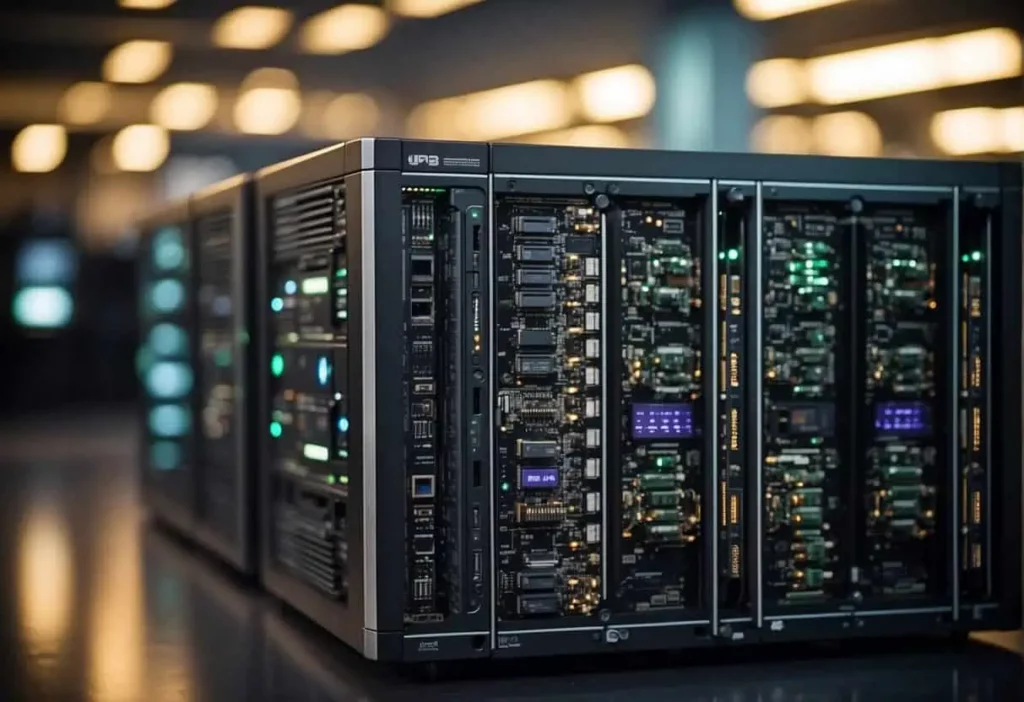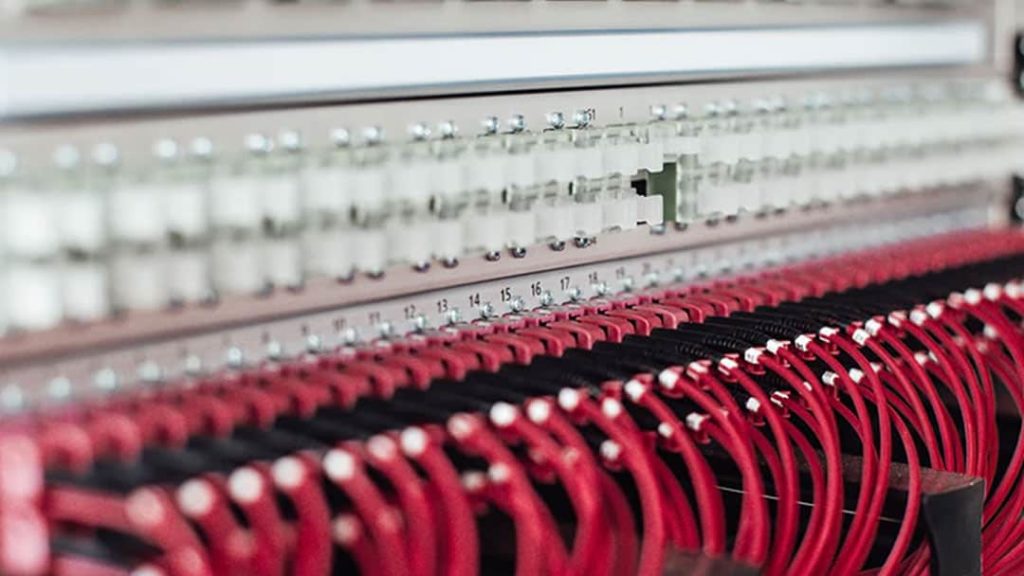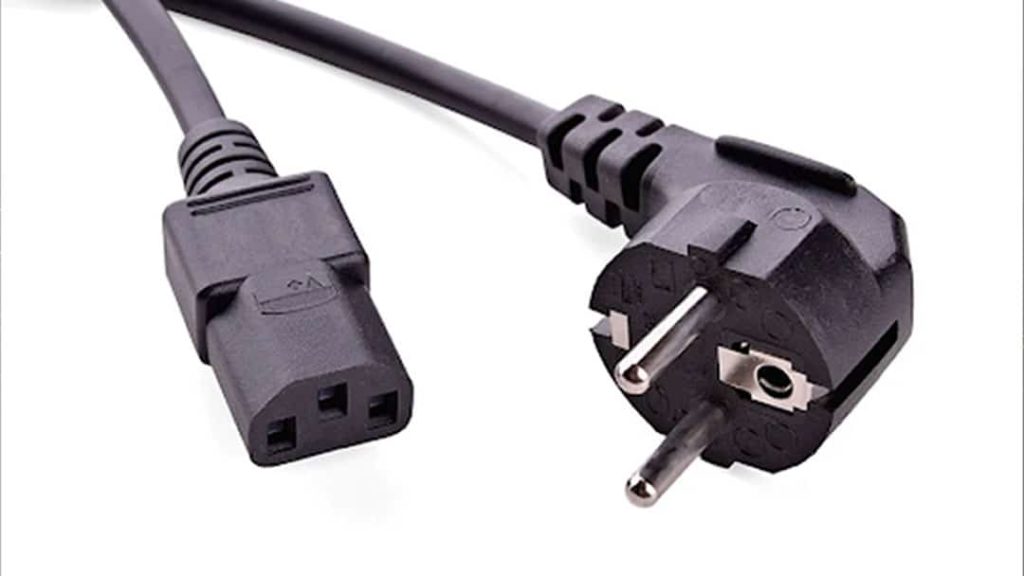A Data Processing Unit (DPU) is a specialized hardware component gaining prominence in the computing landscape for its ability to efficiently manage, process, and move data. As the name suggests, a DPU is purpose-built to handle data-centric tasks that are vital in modern data centers, including security, storage management, and network functions. DPUs are programmable processors that integrate a general-purpose CPU with a high-performance network interface and boast various acceleration engines to optimize performance.
Due to the increasing complexity and quantity of data in cloud and enterprise environments, DPUs are becoming an essential addition to a traditional computing architecture which includes CPUs and GPUs. They are engineered to offload and accelerate tasks that were previously handled by conventional CPUs, thereby optimizing data throughput and releasing the main processor to perform other critical tasks. This architecture allows a more efficient handling of the high data demands of applications such as artificial intelligence, machine learning, and big data analytics. DPUs also come in various forms and are referred to by different names, such as SmartNICs or Infrastructure Processing Units (IPUs), depending on the vendor or specific use cases they address.
Key Takeaways
- A DPU is a computing processor designed for data management and movement.
- DPUs alleviate processing load from CPUs for improved data center efficiency.
- Integration of DPUs is reshaping the performance and efficiency of contemporary computing architectures.
Overview of DPUs
Data Processing Units (DPUs) are revolutionizing the efficiency of data centers by offloading critical processing tasks from the primary CPU, fostering advancements in AI and complex computational workloads.
Definition and Functionality
A DPU is a programmable processor designed to optimize data-centric workloads, effectively distributing the responsibility for handling various computing tasks. At its core, a DPU integrates:
- Multi-core CPU: Provides the programmability and general-purpose processing power.
- Hardware Accelerator: Enhances the execution of specific tasks like AI, analytics, and security operations.
- High-Speed Networking: Facilitates swift data transfer vital in modern data centers.
The primary purpose of a DPU is to alleviate the burden on traditional CPUs and GPUs, tailoring its architecture for parallel and efficient data processing. This division of labor not only increases data center performance but also contributes to the managing of intensive AI-infused workloads while ensuring robust security and better computing efficiency.
Evolution and Origin
The inception of the DPU emerged from the need to tackle ever-increasing data processing demands, where traditional processors struggled. The technology evolved to address specific challenges that arose with the advent of:
- Artificial Intelligence (AI): Demands rapid, parallel processing capabilities.
- Complex Workloads: Analysis, encryption, and transfer of massive data sets involve intricate and resource-intensive calculations.
Compared to the earlier singular focus on CPUs or GPUs, modern technology employs DPUs as an innovative solution to offload tasks, leading to a more streamlined computing environment. As the demands of data-centric computing have scaled, the DPU has become an indispensable component in enhancing today’s data processing strategies, driving the growth of efficient and high-performance data centers.
DPU Architecture

Data Processing Units (DPU) are specialized processors tailored for handling the intricate demands of network and storage tasks in modern data centers. They bridge the gap between the data handling efficiencies and architectural gaps presented by CPUs and GPUs.
Comparison to CPU and GPU
CPU (Central Processing Unit):
- Role: Executes general-purpose computing tasks and manages system operations.
- Architecture: Comprised of a few cores optimized for sequential processing.
GPU (Graphics Processing Unit):
- Role: Handles parallel processing, excelling at computational tasks that can be executed in parallel.
- Architecture: Contains a large number of cores designed for handling multiple tasks simultaneously.
DPU (Data Processing Unit):
- Role: Focuses on data-centric workloads, offloading tasks from CPUs to enhance efficiency.
- Architecture: Integrates processing cores, often based on Arm architecture, with a high-level focus on data processing and movement.
Hardware Accelerator Blocks
DPUs incorporate hardware accelerator blocks which are designed to efficiently manage specific functions such as:
- Data transfer
- Compression
- Encryption
- Network packet processing
These blocks enable the DPU to process data-centric workloads with greater efficiency than general-purpose CPUs, as they are specialized for such tasks.
High-Performance Network Interface
A critical component of DPUs is the high-performance network interface, which entails:
- Network Offloads: Capability to offload network processing tasks from the CPU.
- SmartNIC Functionality: DPUs can integrate SmartNIC (Smart Network Interface Card) features, providing intelligent networking services such as advanced flow control and virtualization support.
This high-performance interface allows DPUs to efficiently manage data flows, ensuring speedy and secure data processing across the network.
Role of DPUs in Computing

Data Processing Units (DPUs) are increasingly pivotal in the modern data center, where they handle specific computing tasks to optimize system performance. DPUs enable better resource allocation within servers, contributing to enhanced efficiency, especially in large-scale infrastructures.
Processing Tasks
A DPU takes on specialized processing tasks that would traditionally burden the CPU. These tasks include but are not limited to:
- Data transfer: A DPU manages the movement of data within the system, ensuring swift and efficient throughput.
- Data reduction: It processes large volumes of data, distilling it down to manageable forms without overloading the primary processor.
- Encryption: DPUs carry out encryption processes to secure data, a function critical to maintaining confidentiality and integrity.
Security Enhancements
DPUs are designed with robust security frameworks to protect the underlying system:
- Firewall and TLS/IPS: They often incorporate built-in firewall capabilities and can effectively manage Transport Layer Security (TLS) and Internet Protocol Security (IPSec) operations, bolstering network security.
- Zero-trust security models: Through this approach, DPUs can enforce stringent security checks on all network traffic, elevating the protection against threats.
Networking and Communication
In the context of networking and communication, DPUs offload and accelerate these specific functions:
- Networking tasks: They manage a range of networking tasks, ensuring the central processor is freed up for application-centric activities.
- Communication protocols handling: DPUs process various communication protocols efficiently, ensuring seamless data flow across the network.
In summary, DPUs are specialized processors adept at managing processing, security, and networking within computing environments. They contribute to a more efficient and secure architecture, effectively complementing traditional CPU tasks and enhancing overall system performance.
DPUs in Data Centers
Data Processing Units (DPUs) are rapidly becoming a fundamental component in data centers, enhancing server efficiency, bolstering storage systems, and impacting overall infrastructure performance, particularly when managing big data analytics and cloud-based services.
Server Optimization
DPUs serve as specialized accelerators within servers, offloading and handling data-centric tasks that traditionally burden the central processing unit (CPU). This offloading process contributes to a notable upturn in server throughput and efficiency. By taking over functions like security, packet processing, and data transfer, DPUs enable servers to focus on their primary computational responsibilities, optimizing their performance for critical applications such as big data analytics.
Storage Improvements
In the storage realm, DPUs act as advanced storage controllers, providing acceleration for data compression and encryption. Their integration directly results in improved storage performance and efficiency. By handling complex storage operations, DPUs reduce the input/output (I/O) overhead on CPUs, thereby enhancing the overall speed and responsiveness of storage systems within data centers.
Infrastructure Impact
DPUs have a profound effect on data center infrastructure. They introduce a new paradigm in infrastructure design by enabling more granular, efficient management of network traffic and storage I/O, which is pivotal for emerging technologies that demand real-time processing, such as AI and IoT. Through programmability and the execution of complex tasks with minimal latency, DPUs support scalable infrastructure that can adapt to varying workloads, making them indispensable for modern data centers geared towards cloud services and data analytics acceleration.
DPU Performance and Efficiency
The deployment of DPUs within data centers has notably enhanced performance and efficiency across various metrics. These specialized processors not only excel in accelerating data-oriented tasks but also contribute to lower energy consumption and improved workload management.
Processing Speed
DPUs are engineered to increase data processing speeds. They achieve this through highly parallel architectures that efficiently handle tasks such as data transfer, security, and analytics. Compared to traditional CPUs, a DPU provides significant latency reductions, particularly in data-intensive environments.
Energy Consumption
One of the appealing aspects of DPUs is their energy-efficient design. By offloading processing-intensive tasks from the CPU, DPUs reduce the overall power consumption of the system. This specialized approach leads to a more sustainable and cost-effective data center operation, especially under heavy workload conditions.
Workload Management
DPUs excel in managing complex and concurrent workloads due to their programmability and autonomous operation. They are capable of workload isolation, which ensures high availability and security, as well as data reduction techniques that optimize storage efficiency. This versatility makes them suitable for scenarios where workload distribution and balancing are critical.
DPU Manufacturers and Technologies
Data processing units (DPUs) are fast becoming a fundamental element in modern data centers. They are propelled by a few leading manufacturers, each with their own technological innovations and specialized products.
NVIDIA
NVIDIA stands at the forefront of DPU technology with their family of DPUs powered by the DOCA software framework, designed to revolutionize data center operations. NVIDIA’s DPUs are engineered to offload, accelerate, and isolate data center workloads, thus optimizing overall performance.
Intel
Intel has joined the DPU market with its own set of offerings aimed at enhancing data center efficiency. Intel’s focus is on integrating their technologies with existing data center infrastructure, providing solutions that blend with their other CPU and networking products.
Marvell and Others
Marvell leads a cohort of other serious contenders in the DPU space. Their DPUs are notable for their ability to optimize data flow and security within the data center. Other companies like Broadcom and Fungible also contribute to the DPU ecosystem with their own unique architectures, underscoring the growing importance and diversity of DPU solutions within the industry.
Applications of DPUs
Data Processing Units (DPUs) serve as pivotal elements in optimizing diverse computational demands across various industry sectors. They provide critical offloading capabilities from primary CPUs, effectively improving efficiency and performance in specialized tasks.
Cloud and Virtualization
In cloud computing environments, DPUs offer enhanced management of virtualized resources, ensuring that virtual machines (VMs) and containers operate smoothly. By handling the high-speed networking connectivity essentials, DPUs facilitate agile and secure data flow within cloud infrastructures, supporting services that require high bandwidth and low latency. SmartNICs, often incorporating DPUs, elevate cloud performance by offloading network processing from the server CPUs, thus freeing them up for other tasks.
- Key functions in Cloud and Virtualization:
- Network virtualization offloading
- Security processing (e.g., encryption/decryption)
- Storage management acceleration
Telecommunications
The telecommunications sector greatly benefits from DPU’s capabilities, especially with the roll-out of 5G networks which demand high-throughput and low-latency data processing. DPUs are intrinsic in managing telecommunications workloads, from routing and switching to managing network security. Their ability to efficiently process vast amounts of data aids in meeting the high-speed networking connectivity prerequisites of modern telecommunication infrastructures.
- Relevance in Telecommunications:
- Real-time processing for 5G latency requirements
- Enhanced network function virtualization (NFV)
Big Data Analytics
DPUs are increasingly pivotal in the realm of big data analytics, where they accelerate the processing of massive datasets through hardware-accelerated algorithms. They assist in complex analytics, deep learning, and machine learning computations by providing specialized processing power that can handle vast-scale data analysis more efficiently than conventional CPUs. In supercomputing, DPUs improve throughput and reduce bottlenecks in data-intensive scenarios.
- Benefits for Big Data Analytics:
- Accelerated data processing for analytics and AI
- Improved efficiency in handling large-scale data sets
By integrating DPUs into their infrastructure, organizations leverage specialized computational resources that magnify the capabilities of data centers and enable progressive computing paradigms in cloud, telecommunications, and big data analytics.
DPU Integration Challenges
Integrating Data Processing Units (DPUs) into existing systems presents specific challenges. These include ensuring compatibility, managing costs, and considering the future evolution of technology.
Compatibility and Interoperability
The integration of DPUs within an organization’s existing infrastructure requires careful consideration of compatibility and interoperability. Since DPUs are designed to offload certain tasks from the CPU, ensuring that they function seamlessly with existing compute resources, operating systems (OS), and deep learning algorithms is critical. Compatibility issues could arise from the DPU’s support for protocols like RoCE (RDMA over Converged Ethernet), which must interact with the organization’s current network setup. Achieving this harmonious integration without disrupting current operations is key.
Cost and Investment
Deploying DPUs involves not just the initial cost of the hardware but also the investment in infrastructure upgrades and staff training. Businesses must contend with the financial implications of integrating new technologies like DPUs, which extend beyond the purchase price to include potential upgrades to storage systems and security measures. Given that DPUs are often employed in supercomputers and cloud environments, the investment for widespread adoption can be considerable, especially for businesses requiring high levels of computational acceleration.
Future Outlook
Adopting DPUs is a strategic business decision that must consider the future outlook of the technology. With DPUs acting as accelerators for specific processes, they may become essential for organizations looking to leverage advanced applications in cloud environments. However, they must also evaluate the longevity of the technology, considering how DPUs will fit into their evolving IT strategy, and ensure that the investment remains relevant as storage, compute architectures, and security demands continue to change.
Emerging Technologies and Future Directions
As data centers evolve, there is a significant push towards integrating advanced technologies within DPUs to accelerate and secure data workloads. The integration of ARM and FPGA technologies, the development of Infrastructure Processing Units (IPUs), and the incorporation of advanced security protocols are central to this transformation.
ARM and FPGA Technologies
ARM architecture is increasingly being adopted in System on Chips (SoCs) for its energy efficiency and performance. In the context of DPUs, ARM CPUs provide the necessary processing capabilities for control plane tasks while conserving power. FPGA-based DPUs leverage the flexibility of FPGAs to handle a variety of workloads with efficient high-speed packet processing, adapting to new protocols without the need for hardware redesign.
Infrastructure Processing Unit
The Infrastructure Processing Unit, or IPU, represents a leap forward in computing. IPUs offer dedicated processing for infrastructure tasks that were traditionally handled by x86 CPUs. They are designed to offload and accelerate storage I/O acceleration and memory controllers, while facilitating improved interaction with hypervisors and virtio standards, improving overall data center efficiency.
Advanced Security Protocols
Security within DPUs includes encryption/decryption mechanisms integral to data security and secure boot processes. Advanced security protocols ensure that from the moment of booting, throughout data transport and processing, each step adheres to stringent security measures. Implementing these protocols provides a robust defense against unauthorized access, ensuring safe data transport and processing within the data center’s ecosystem.
Frequently Asked Questions
This section covers the various applications and advantages of Data Processing Units (DPUs) across different industries, highlighting their specific roles and comparative functions.
What is the role of a DPU in computing?
In computing, a DPU acts as a specialized processor that offloads and accelerates tasks related to data management from the CPU. It handles data-centric operations like networking, security, and storage, enhancing performance and efficiency in data centers.
How does a DPU function in the financial sector?
In the financial sector, a DPU’s primary function is to enable rapid, secure processing of transactions. It ensures data integrity and accelerates analytics, which is critical for real-time decision-making in finance.
What significance does a DPU have in the gaming industry?
A DPU in the gaming industry can optimize network traffic management and reduce latency. This is particularly important in online gaming environments, where real-time data processing is crucial for an immersive gaming experience.
How does a DPU compare to a CPU in terms of functionality?
A DPU and a CPU differ in functionality; while a CPU is a general-purpose processor handling a wide array of computing tasks, a DPU is tailored for specific data-oriented tasks, which it performs more efficiently than a CPU.
In what ways is a DPU used within medical technology?
Within medical technology, a DPU is utilized for processing large volumes of medical data, such as imaging and diagnostics. This specialized processing aids in faster and more accurate analysis, benefiting patient care and medical research.
What are the advantages of using a DPU in shipping and logistics?
A DPU enhances shipping and logistics by providing efficient tracking, management, and analysis of logistics data. It facilitates better route optimization, cargo monitoring, and reduces operational delays, thereby improving overall logistics performance.
Last Updated on February 12, 2024 by Josh Mahan




